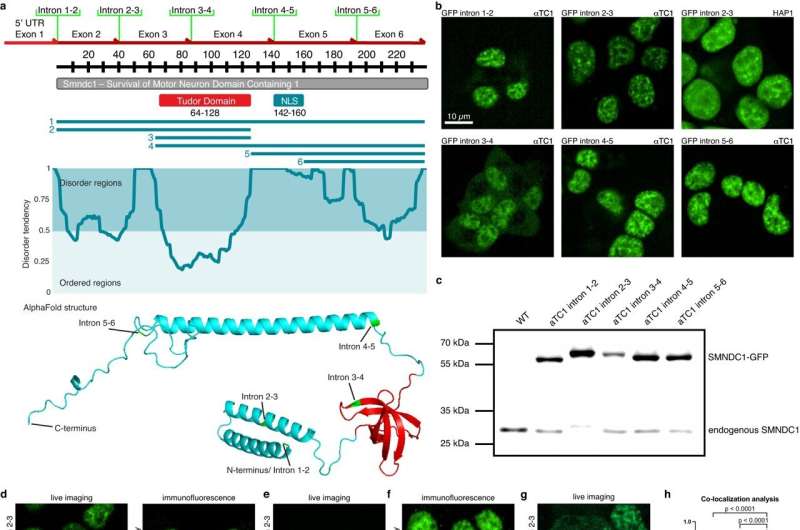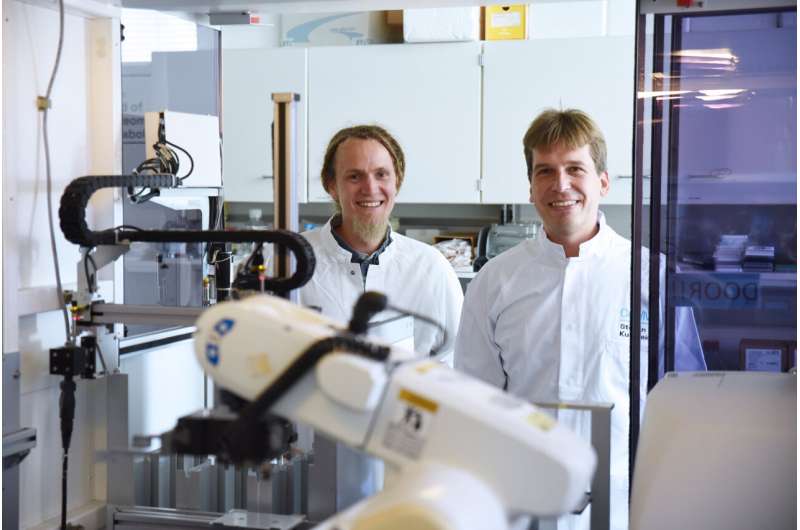This article has been reviewed according to Science X's editorial process and policies. Editors have highlighted the following attributes while ensuring the content's credibility:
fact-checked
peer-reviewed publication
proofread
New inhibitor for regulating the essential protein SMNDC1

The SMNDC1 gene controls key functions in the human body and is linked to diseases such as diabetes and cancer. Scientists in Stefan Kubicek's research group at the CeMM Research Center for Molecular Medicine of the Austrian Academy of Sciences have successfully pinpointed the exact location of the SMNDC1 protein within the cell nucleus and identified an inhibitor that opens up the potential for therapeutic applications of SMNDC1. The study has been published in Nature Communications.
The protein SMNDC1 is considered an essential gene in the human body, present in nearly every cell. Previous studies by Principal Investigator Stefan Kubicek's research group at CeMM had shown that knocking down SMNDC1 can stimulate alpha cells in the islets of Langerhans to produce insulin, potentially offering a new therapeutic target for treating diabetes.
To better understand the function of SMNDC1, the scientists in the Kubicek group investigated its precise cellular location and its interactions with molecules.
SMNDC1 is classified as a splicing factor, meaning it is involved in the process where RNA is transformed into the final messenger RNA that carries the genetic information. This messenger RNA is essentially the blueprint for building a specific protein in a cell. Consequently, SMNDC1 influences the expression of many other proteins.
Study first author Lennart Enders, a Ph.D. student in Kubicek's lab, successfully and precisely localized SMNDC1 in the cell nucleus for the first time, explaining, "Our study has shown that SMNDC1 specifically resides within small compartments in the cell nucleus known as 'nuclear speckles,' due to their speckled appearance. These small droplets, formed through phase separation without a membrane, collect proteins with similar functions. SMNDC1 congregates with other proteins that are also thought to play a central role in the splicing process."

New inhibitor binds specifically to SMNDC1
Studies have already linked SMNDC1 to a wide variety of diseases such as liver cancer and diabetes. In light of this, Enders and his colleagues searched for an inhibitor that specifically binds to and influences SMNDC1, thereby identifying a new potential drug target.
Through a comprehensive screening of about 90,000 chemical compounds in collaboration with Marton Siklos, a chemist in Kubicek's lab, key molecules were identified as inhibitors and subsequently improved in their molecular structure to ensure better and more specific binding to SMNDC1. Together with the Sattler Laboratory (TU Munich), the scientists used nuclear magnetic resonance to demonstrate precisely how the developed inhibitor binds to the SMNDC1 protein domain.
Research group leader Stefan Kubicek added, "SMNDC1 is an essential gene, and its complete loss impairs the viability of most cell types. In relation to diabetes and cancer, we see therapeutic potential in exploring new treatment avenues. Our earlier study revealed that SMNDC1 suppresses insulin transcription and PDX1 mRNA stability in alpha cells. Additionally, the loss of SMNDC1 in human pancreatic islets improves glucose sensitivity."
In the next phase, the scientists intend to collaborate with partners to further investigate the therapeutic potential of SMNDC1.
More information: Lennart Enders et al, Pharmacological perturbation of the phase-separating protein SMNDC1, Nature Communications (2023). DOI: 10.1038/s41467-023-40124-0
Journal information: Nature Communications
Provided by CeMM




















